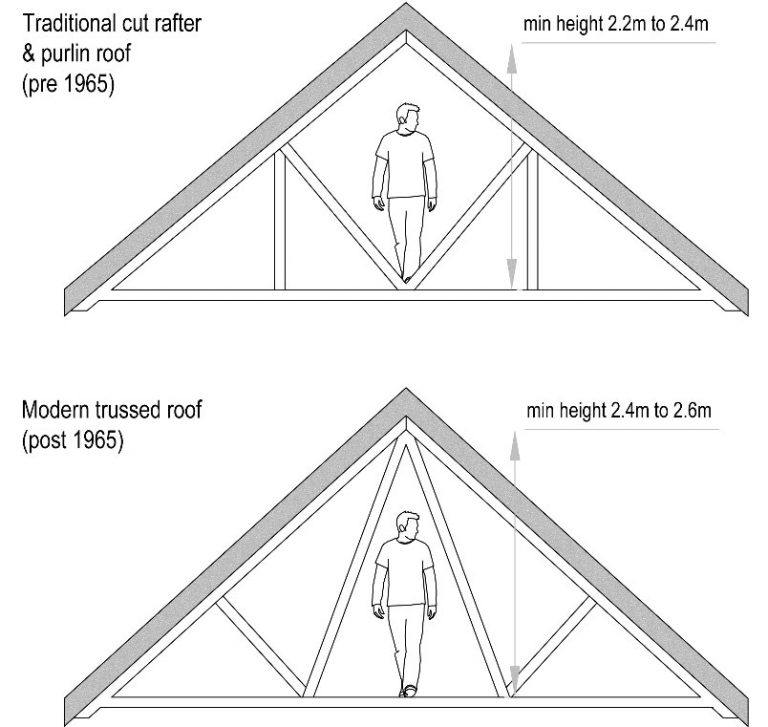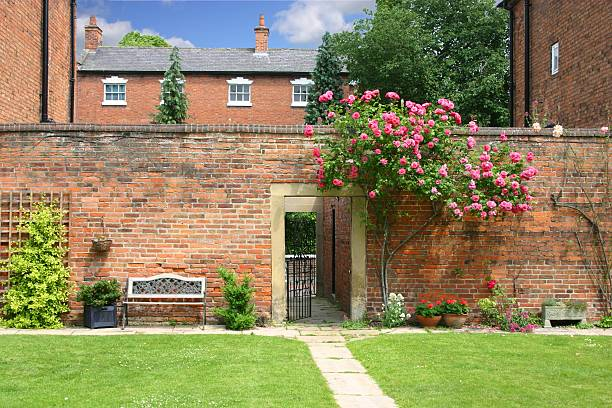A trussed roof is a roof that is supported by a series of timber beams, which are known as trusses. This type of roof is common in the UK, and it can be used for a loft conversion. There are some things to keep in mind when doing a loft conversion on a trussed roof, however.
For example, you will need to make sure that the trusses are strong enough to support the weight of the additional flooring and insulation. You may also need to add additional supports to the roof if it is not already strong enough.
Get A FREE Quote Now
Click the button below to receive your complimentary, no-obligation quote from our local specialists.
What is a trussed roof and why is it used in the UK?
A trussed roof is a roof that is supported by multiple wooden beams, known as trusses. This style of roof is typical in the United Kingdom and can be used to convert a loft. There are certain things to bear in mind when converting a loft on a trussed roof, however.
The main reason that trussed roofs are common in the UK is because they are very strong and can support a lot of weight. This makes them ideal for loft conversions, which often involve adding a lot of additional flooring and insulation.
What are the benefits of using a trussed roof loft conversion?
There are several benefits of using a trussed roof for a loft conversion. Firstly, trussed roofs are very strong and can support a lot of weight. This makes them ideal for loft conversions, which often involve adding a lot of additional flooring and insulation. Additionally, trussed roofs are relatively easy to construct and are therefore often cheaper than other roof styles.
How do you know if your roof is strong enough to support a loft conversion?
There are a few things you can do to check if your roof is strong enough to support a loft conversion. Firstly, you can ask a builder or contractor to assess the strength of your roof. They will be able to tell you if your roof is strong enough to support the extra weight of a conversion. Additionally, you can check the construction of your roof. Trussed roofs are typically very strong, while pitched roofs may not be as robust. Finally, you can look at the weight limit specified by your roof manufacturer or installer. Most trussed roofs can support a lot more weight than pitched roofs.
What are the steps involved in doing trussed roof loft conversion?
There are a few steps involved in doing a loft conversion on a trussed roof. Firstly, you need to make sure that the trusses are strong enough to support the weight of the additional flooring and insulation. If they are not, you may need to add additional supports.
Next, you will need to install the new flooring and insulation. This can be done by either installing new panels or laying down a layer of insulation over the existing roof. Once this is done, you can start work on the actual conversion. This typically involves installing stairs, windows, and other fixtures and fittings.
Finally, you will need to decorate the loft space and add any finishing touches. This can be done by painting the walls, installing carpet or flooring, and adding furniture.
What are some of the things to keep in mind when converting your loft on a trussed roof?
Some of the things to keep in mind when converting your loft on a trussed roof include ensuring that the trusses are strong enough to support the weight of the additional flooring and insulation, installing new flooring and insulation, and installing stairs, windows, and other fixtures and fittings. Additionally, you will need to decorate the loft space and add any finishing touches.
Get A FREE Quote Now
Click the button below to receive your complimentary, no-obligation quote from our local specialists.
Building regulations for trussed roof loft conversions
The UK has specific building regulations that must be followed when doing a loft conversion. These regulations are designed to ensure that the roof is strong enough to support the extra weight of a conversion.
If you are planning to do a loft conversion on a trussed roof, it is important to make sure that you comply with the relevant building regulations. This can be done by consulting with a builder or contractor, who can tell you if your roof is strong enough to support the conversion. Additionally, you can check with your roof manufacturer or installer to see what their weight limit is for trussed roofs.
Removal and Reconstruction of Roofs
If you are planning to do a loft conversion on a trussed roof, it is important to make sure that you comply with the relevant building regulations. This can be done by consulting with a builder or contractor, who can tell you if your roof is strong enough to support the conversion. Additionally, you can check with your roof manufacturer or installer to see what their weight limit is for trussed roofs.
If your roof is not strong enough to support a loft conversion, you may need to add additional supports in order to make it safe for use. This can be done by installing new beams or trusses, or by adding additional columns to the roof.
Once you have ensured that your roof is safe for a loft conversion, you will need to install the new flooring and insulation. This can be done by either installing new panels or laying down a layer of insulation over the existing roof.
Once the flooring and insulation are in place, you can start work on the actual conversion. This typically involves installing stairs, windows, and other fixtures and fittings.
Finally, you will need to decorate the loft space and add any finishing touches. This can be done by painting the walls, installing carpet or flooring, and adding furniture.
Why is it difficult to convert?
One of the reasons why it can be difficult to convert a trussed roof into a loft is because the roof may not be strong enough to support the extra weight. Additionally, the conversion process can be complex and expensive, so it is important to make sure that your roof is capable of supporting it before starting the project.
How do I know if I have a trussed roof?
The easiest way to determine if you have a truss roof is to consult with your roof manufacturer or installer. They will be able to tell you if your roof is supported by trusses and what the weight limit is for those trusses.
If you are not sure who installed your roof, you can check with your local council. They will be able to tell you if your roof is a trussed roof and what the building regulations are for converting it.
Another way to determine if you have a truss roof is to look at the roofline of your house. Trussed roofs typically have triangular shapes, whereas other types of roofs usually have more of a rectangular shape.
Get A FREE Quote Now
Click the button below to receive your complimentary, no-obligation quote from our local specialists.




